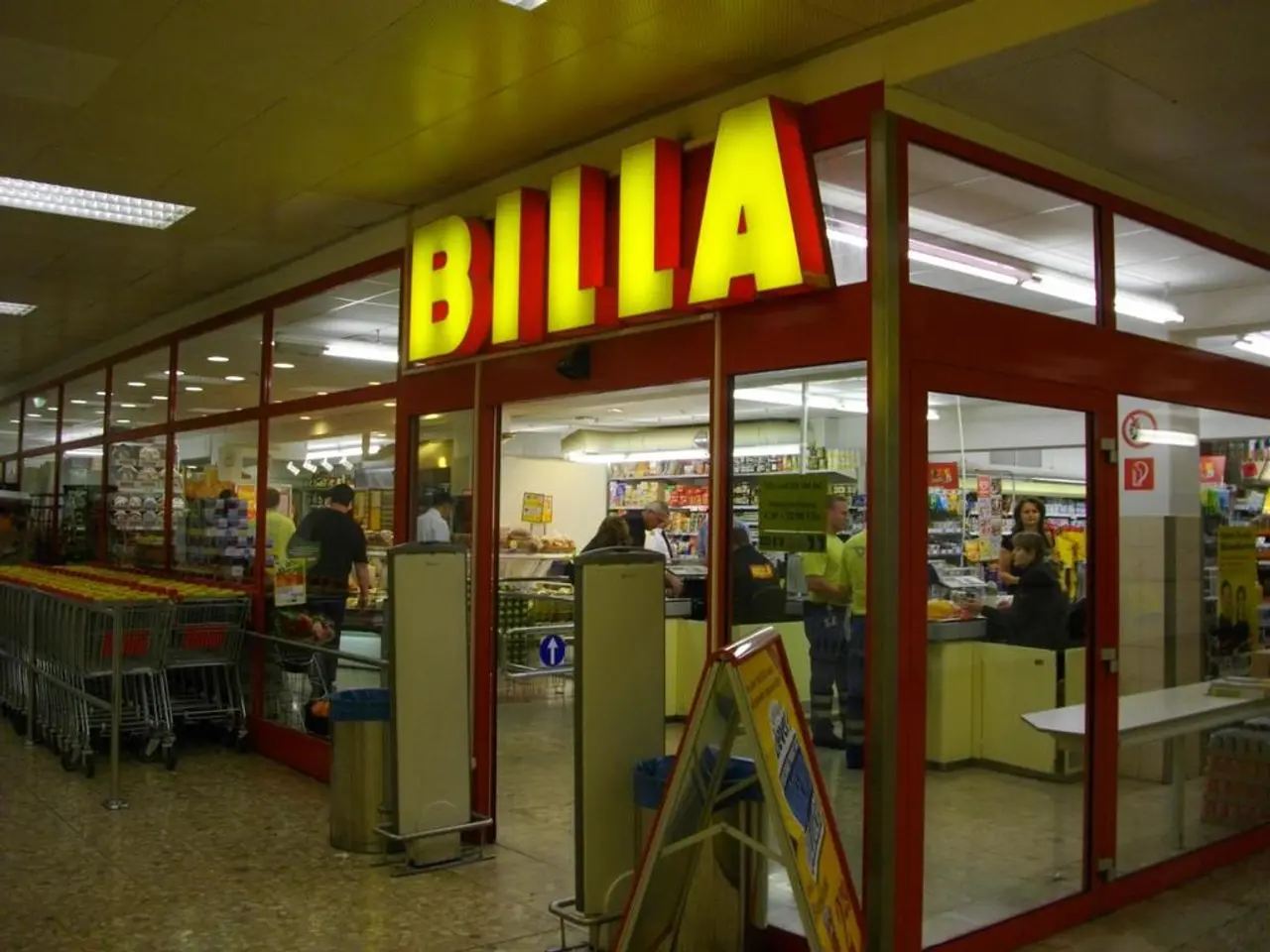Over 50,000 retail outlets potentially shutting down by 2027, claims UBS report
In a recent report, UBS analysts have forecasted an increase in retail store closures over the next five years. The anticipated escalation is primarily driven by higher costs, a decline in units per store, and the likelihood of store closures disproportionately affecting smaller chains.
The retail sectors most at risk include pharmacy chains, home goods retailers, and those sensitive to tariff changes and inflationary pressures. For instance, Rite Aid has planned to close 489 stores, while Walgreens aims to shutter about 2,150 stores by 2027. At Home, a home goods retailer, has filed for bankruptcy and plans to close 27 stores due to tariff-related cost pressures.
The report also highlights the challenges faced by textiles and garments, gems and jewelry, chemicals, industrial goods components, auto components, and electronics sectors, as they grapple with tariff changes and inflationary pressures. Increased tariffs and rising operational costs continue to contribute to financial distress, bankruptcies, and private equity takeovers within retail.
UBS specifically points to tariffs, inflation, and rising debt as key factors driving the anticipated escalation in store closures through 2027. The report emphasizes that retail closures will outpace openings nearly twofold, resulting in a total of over 123 million square feet of vacated retail space in the first half of 2025 alone.
However, the report also underscores the importance of digital investments for retailers. In-store fulfillment of digital orders may reduce the risk of store closures, especially for brands and specialty retailers. The forecast is based on the assumption that 25% of online orders will be fulfilled by a retail store by 2027, up from 15% currently. Companies with a strong direct-to-consumer (DTC) focus and high brand loyalty, like Nike and Levi's, are best positioned for the ongoing shift to digital fulfillment.
The U.S. currently has a base of about 940,000 retail stores, excluding fuel and food service. UBS predicts that approximately 50,000 retail stores may close by 2027. If online penetration reaches 28-29% with 2.5% retail sales growth, up to 130,000 stores could close.
The report also notes that from 2007 to 2019, firms with less than 500 employees closed about 40,000 stores, or 5% of their base, while retailers with more than 500 employees added 17,000 stores. The overall cost of doing business has risen significantly in the last 12 months, due in part to higher wages. Retail hourly wages increased about 5% over the last years.
Online retail spending per household was $9,900 in 2022, up from $8,900 a year ago and up from $4,000 in 2015, according to UBS. Department stores and specialty retailers are forecasted to remain net store closers.
In conclusion, UBS forecasts a challenging environment for retail stores, especially in pharmacy, home goods, and tariff-sensitive sectors, with a significant increase in closures expected by 2027. The report emphasizes the importance of digital investments for retailers to navigate this challenging landscape.
- UBS predicts that approximately 50,000 retail stores may close by 2027, with the report also noting that from 2007 to 2019, firms with less than 500 employees closed about 40,000 stores, suggesting a continued trend of store closures, particularly for smaller chains.
- The anticipated escalation in store closures is primarily driven by higher costs, a decline in units per store, and the likelihood of store closures disproportionately affecting smaller chains, as stated in the report.
- In a contrasting development, the report underscores the importance of digital investments for retailers, suggesting that in-store fulfillment of digital orders may reduce the risk of store closures, especially for brands and specialty retailers with a strong direct-to-consumer (DTC) focus and high brand loyalty.
- The retail sectors most at risk include those sensitive to tariff changes and inflationary pressures, as Rite Aid has planned to close 489 stores, Walgreens aims to shutter about 2,150 stores, and home goods retailer At Home has filed for bankruptcy due to tariff-related cost pressures, according to the report.




